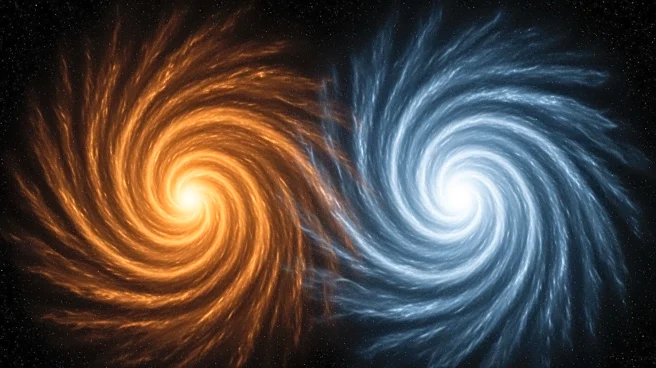What's Happening?
Researchers at the Weizmann Institute of Science have developed a new model that explains the mystery of opposite wind directions on the solar system's giant planets. The study, led by Dr. Keren Duer-Milner
and Prof. Yohai Kaspi, utilized hydrodynamic modeling to demonstrate that variations in atmospheric depth can account for the differing wind directions observed on Jupiter, Saturn, Uranus, and Neptune. The model establishes a direct link between wind direction and atmospheric depth, providing a unified mechanism for understanding the eastward jet streams on Jupiter and Saturn and the westward jet streams on Uranus and Neptune.
Why It's Important?
This breakthrough in planetary science offers a deeper understanding of atmospheric dynamics on giant planets, which has implications for the study of planetary formation and evolution. The model could enhance predictions about weather patterns and atmospheric behavior on these planets, contributing to the broader field of astrophysics. Understanding the mechanisms behind wind direction can also inform future space missions and the study of exoplanets with similar atmospheric conditions. The research highlights the importance of interdisciplinary approaches in solving complex scientific mysteries.
What's Next?
The findings from this study may lead to further research into the atmospheric dynamics of other planets and celestial bodies. Scientists could explore the application of this model to exoplanets, potentially uncovering new insights into their atmospheric conditions. The study may also inspire additional investigations into the role of atmospheric depth in influencing other planetary phenomena, such as temperature distribution and cloud formation. Collaboration with international space agencies could facilitate the integration of these findings into future exploratory missions.
Beyond the Headlines
The development of this model not only advances scientific knowledge but also emphasizes the importance of innovative research methodologies in addressing longstanding questions in planetary science. The study exemplifies how theoretical models can provide practical insights into natural phenomena, fostering a deeper appreciation for the complexities of the universe.












